
A SWEET DETOUR














































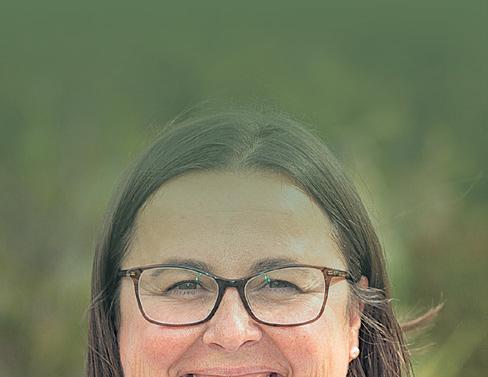
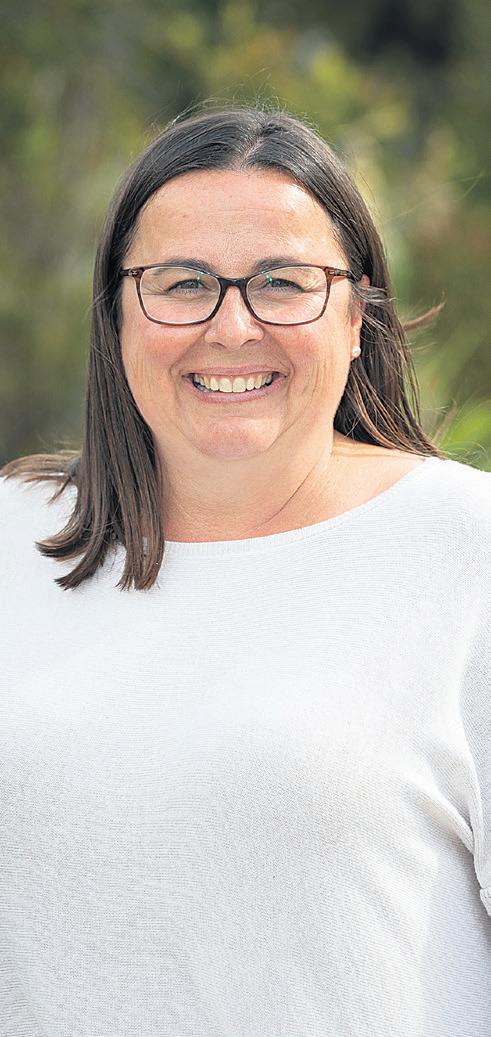 BY SARAH O'BRIEN
BY SARAH O'BRIEN
THINGS HAVE changed rapidly over the last month here in the Macalister Irrigation District.
It seems once the tap turned off, farmers have been put under pressure to keep enough water up for pasture growth. After having so much early rain, then a hot dry spell, I’m sure we’re all wondering when the tap will turn on again.
While writing this, we’re expecting a heatwave across Gippsland over the next four days. As the calendar tips us into April, hopefully Mother Nature gets the memo about an autumn break I’m sure we’re all waiting for. Our exciting and highly sought-after Don Campbell Memorial Tour to Tasmania ran last month. Again this year, participants were fortunate enough to attend the Tasmanian Dairy Conference.
Congratulations to the 15 successful applicants out of the 26 that applied this year. This study tour has grown in popularity over the years and is such a great learning and networking opportunity. I’d encourage you to apply or talk to a young person that would benefit from the experience next year.
The Young Dairy Network (YDN) is a great way for new entrants in the industry to link into specific training and social connections. The Gippsland YDN is run by a committee of young leaders from all over Gippsland who
come together and direct their own learning and development journey.
It’s a fabulous way for our next generation of dairy farmers to make their mark and gain great leadership skills.
Recently the GippsDairy team helped deliver a successful Growing Beef from Dairy Field Day in Woodleigh to showcase the profitability, market options and genetic breeding of dairy beef.
A pilot program has been running on farms and this event was an opportunity to share the findings with Gippsland dairy farmers. A special thanks to Will and Sarah Jelbart for hosting the field day.
If you would like to know more about the Growing Beef from Dairy Project, please contact the GippsDairy office at info@gippsdairy. com.au
Our regional Muster took place on-farm in Trafalgar recently.
Local farmers shared their personal wisdom and insights on topics including pastures, pathways through the industry and performance. Hearing directly from farmers is always inspirational learning.
Our goal as a board and team is to offer an event that stimulates discussion, offers opportunities for growth and a social connection with like-minded peers. It was fantastic to see so many people gather and participate in this day.
Thank you to Louise and Graeme Paul, Belinda Egan and Simon Reid for hosting the event.
I was fortunate to attend the Australian Dairy Conference in Melbourne in February.
Congratulations to all those that organised and facilitated a wonderful experience. Sitting in a crowd full of peers, all pursuing knowledge and insights from experts in their fields is inspirational.
The ‘Power of Purpose’ was the theme this year. We heard some very heartfelt experiences of dairy farmers that have been dealt unbelievably difficult circumstances in their farming journey.
With each experience shared I could hear the evidence of purpose to keep going, to take steps to recover and come out the other side.
There is definitely power in having purpose. It gets us out of bed at 4am each day, it gives us direction and meaning. Hopefully it leads to satisfaction in why we dairy farm.
Around the same time as the conference, parts of Gippsland experienced unprecedented weather conditions, devastating both communities and dairy farms.
Bruce Manitveld was a leader in his own right within the dairy industry. He was well-respected and successful in his purpose that was cut short too quickly.
It’s times like this that the comradeship of others around us is important to extend and accept.
If you require support, we strongly encourage you to reach out to the GippsDairy office or contact Lifeline Australia on 131 114 or go to https://www.lifeline.org.au/ for 24-hour crisis support.
Sarah O’Brien is the GippsDairy chair.


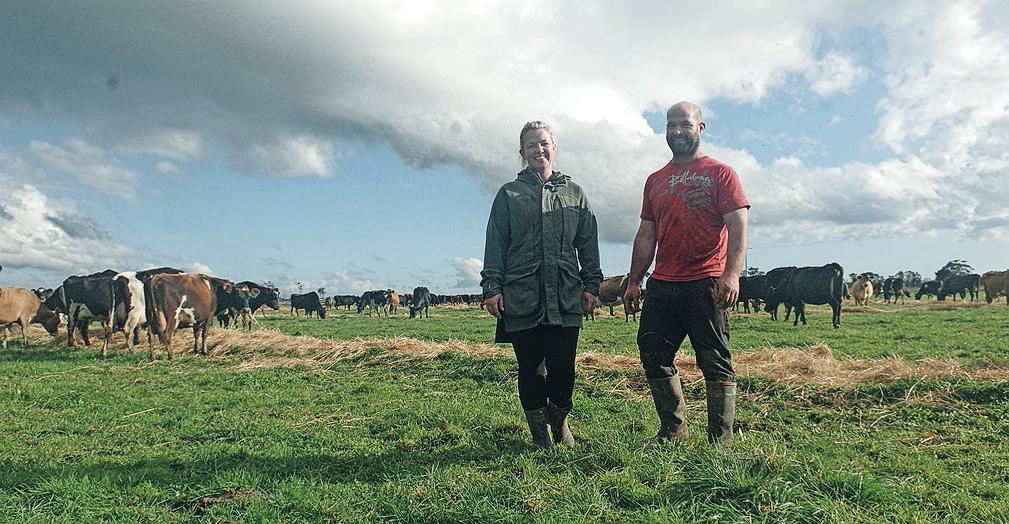
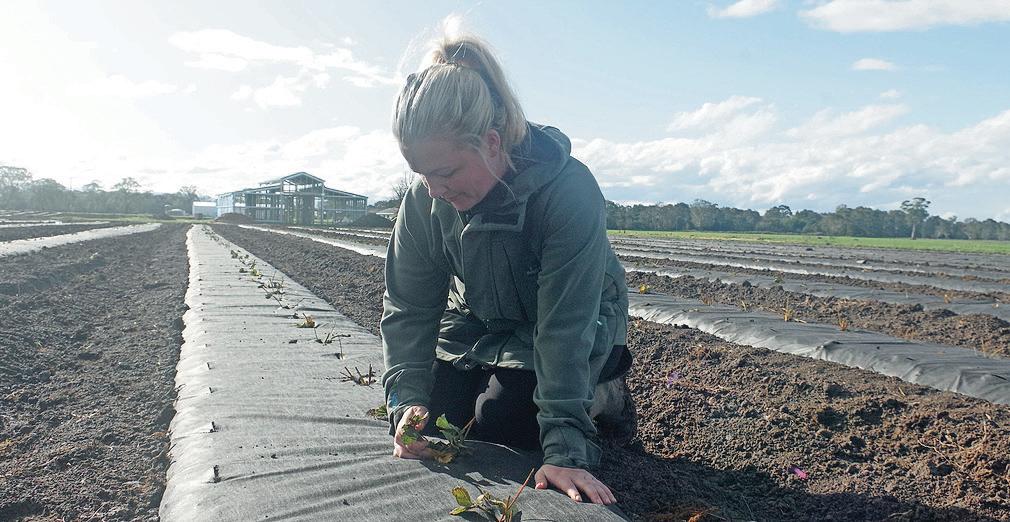
GIPPSLAND DAIRY farmers have diversified into tourism and hospitality, making their farm a tourist destination and creating a paddockto-plate experience for visitors.
Nicole and Brendan Saunders moved from New Zealand to Victoria in 2018, and in a short couple of years were running three dairy farms in the Macalister Irrigation District.
In the 2022-23 season, their farms produced 690,000 kg of milk solids, from 1250 spring-calving cows grazing a mixture of owned and leased land near Maffra, some of it irrigated and some dryland.
Operating the three farms, they used 1100 megalitres of high-reliability irrigation water, out of the Lake Glenmaggie system, 350 Ml of groundwater, and some low-reliability water shares.
Across the three farms they employed a workforce of 12 equivalent full-time employees, including backpackers, peaking at 17 EFT during calving.
Nicole and Brendan have utilised a range of resources to help improve their systems.
Nicole completed the Rabobank Farm Managers Program, which helped her develop a strategic business plan for their farming enterprise, identifying clear goals and pathways to achieve them.
Their four clear business goals are to increase profit per hectare, produce a high quality product, improve their team and expand the business.
A key change was to bring all their herds to spring calving, to take advantage of pasture growth for cow nutrition and to optimise their milk production curve.
Nicole has since undertaken the Rabobank Executive Development Program and Dairy Australia’s People and Culture Accelerator Program.
The couple has undertaken governance and
investment courses and developed networks within and outside their industry.
Investments in their agribusiness have been fast-tracked with the assistance of Federal Government Drought Resilience Innovation Grants and a $100,000 grant from Woolworths.
They have also undertaken an energy efficiency audit that enabled them to make key infrastructure changes.
“We were able to purchase herd health monitoring collars for our cows, and the management software,” Nicole said.
“We replaced our milk cooling system.
“We changed our river pumps from tractor-driven to a new diesel non-PTO pump, which has improved efficiency and made energy savings.”
Staff attend milking courses — “we saw a significant improvement in their milking skills and knowledge” — and are paid bonuses when somatic cell count averages under 150,000.
Technology is used for timekeeping and communication with and between staff, to manage daily and weekly tasks, and improve overall workplace culture and productivity.
In 2023, Nicole and Brendan diversified their business beyond dairy, annexing 0.8 hectares of their farm at Mewburn Park to build a destination tourism feature and hospitality and horticulture business — the Berry Dairy.
“We already had the land and water available for us to use,” Nicole said.
In preparation, they also reduced their dairy holdings to two farms — one owned and one leased — but increased their herd size to 1300 across both farms. The herd remains spring calving.
Relinquishing one dairy farm also reduced their groundwater licences to 250 Ml. Brendan and Nicole also reduced their workforce across the two dairy farms to eight EFT.
On their dairy farm at Mewburn Park, Brendan and Nicole built a café, supported by an animal petting zoo, children’s play area, outdoor seating and dining, and an extensive
pick-your-own strawberry farm.
The café has been open every day during summer.
“There’s only a few businesses bringing tourists and visitors out this way,” Nicole said.
“I wanted to provide a destination for tourists and local people.”
The Tinamba Hotel is a well-known hospitality business in the district, and Maffra is a short drive away. The Berry Dairy was conceptualised to expand on existing tourism offerings and offer an alternative venue, with families in mind.
“I spoke to Wellington Shire Council and they were very supportive and helped me to complete the necessary paperwork for a business like this,” Nicole said.
She developed an online social media platform to promote the project and detail the build and growth of the strawberry farm.
This grew an audience before the business opened.
It was an easy step then to launch the business in time for summer and daylight savings.
However, it wasn’t an easy beginning, with three floods in three months from October to Christmas — with about 30 per cent of plants lost, this sadly affected production.
“We lost 30 per cent of the strawberry plants, but we’re planting 20,000 new plants in winter to meet demand next summer,” Nicole said.
The pick-your-own strawberries option is available November to April.
By the end of December, more than 5000 people had visited the café and picked their own strawberries. That has steadily grown.
“We’re above the target of what I forecasted, and I did forecast pretty high,” Nicole said.
“We’ve had over 10,000 visitors over the last two-and-a-half months.
“That’s despite our strawberries being about two months behind in production of where they should have been, because of the cold and wet weather.
“On the positive side, that means we’ll have
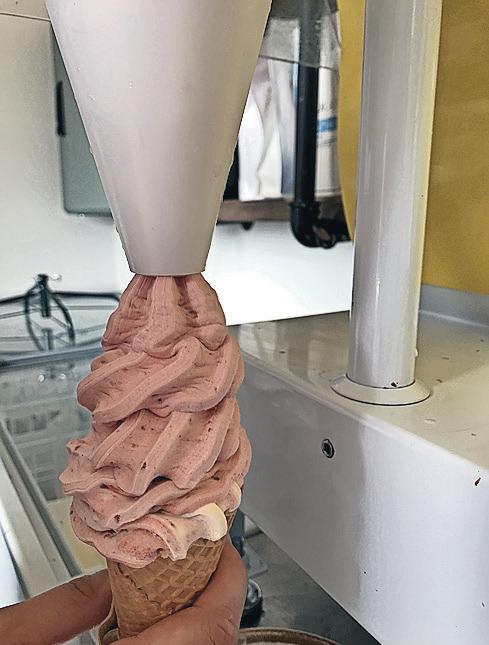
strawberries all the way through to April.”
The paddock to plate experience is supplemented by a café menu that includes the Saunders’ own grass-fed beef on sliders and in nachos and strawberries are made into jam for scones and included in ice-cream sundaes and cones.
Nicole and Brendan support other local producers and employ six EFT employees for the six months of the year that the café and strawberry fields are open.
The café is also licensed and a local musician provides live music on some Sunday afternoons.
“We’re getting lots of positive feedback from visitors about the Berry Dairy being about agriculture. They like that it’s on the dairy farm and is attracting people to the food in our region,” Nicole said.
“The Berry Dairy has been created to connect people to where their food comes from, and with the people who grow that food.”
From paddock to ice-cream cone. Nicole and Brendan Saunders operate two dairy farms and have diversified into horticulture, hospitality and tourism. Nicole Saunders at work in the strawberry fields.THE RISK of using legislation to drive change was the topic of the keynote address at GippsDairy’s Dairy Muster on March 14 at Trafalgar East.
Speaker, Dawn Dalley, is a senior research scientist with DairyNZ and has a background as a scientist in the dairy industry in Australia. Her team’s focus is on methods to reduce nitrogen losses by 30 per cent on the farm.
Graeme and Louise Paul, with their children, Stephanie, Bayley and Darcy, hosted the 230 people who attended the Muster. Their co-farm hosts were their sharefarmers, Simon Reid and Belinda Egan, of Jackiah Jerseys.
Dawn told the gathering that in New Zealand, a raft of legislation around water quality, resource management and environmental standards has been reflected in milk company supply and bank lending conditions placed upon farmers.
A key focus is on reducing the risk of nitrates leaching from the soil, measuring the effect of fertiliser inputs and from animals urinating on pasture.
“The focus of research is to identify the link between farm practice and the risks for environmental outcomes, against profitability,” Dawn said.
She leads a 740-cow multi-year farm systems research project comparing actions and outcomes to reduce on-farm nitrogen inputs by at least 30 per cent.
Part of the research is to quantify the surplus of nitrogen, compared with nitrogen leaching.
“Generally, nitrogen surplus increases with increasing farm intensity,” Dawn said.
“But there is a large variation between farms, and different farming systems.”
Beginning data at the Northland Agricultural Research Farm identified at a stocking rate of 3.1 Friesians/hectare, production needed to be 190kg/N/ha using kikuyu and rye-grass pastures, and 700kg dry matter/cow of imported feed.
Nitrogen loss can be mitigated against reduced nitrogen inputs, by growing pasture species that are efficient users of nitrogen.
Then high production cows at a lower stocking rate, creates more pasture for each cow.
Then over-wintering activities that reduce pasture use can also lower nitrogen use.
One option is to breed a cow with more efficient utilisation of urine. This can also be enhanced with inhibitors added to her diet to reduce the nitrogen in the urine.
Dawn said seaweed and fodder beet were two of the inhibitors being researched, to reduce urinary nitrogen excretion.
“Plantain is also being researched, because low plantain consumption affects a cow’s urine output, and leads to significant reduction in nitrogen concentration in the cow’s urine,” Dawn said.
“These inhibitors lead to significant reduction in nitrate leaching from the urine.”
A research project in New Zealand is identifying how effective ‘haylage’ is at generating pasture.
It is an adaptation of a United States project, and includes using freestall barns and feedpads.
Dawn Dalley, from DairyNZ, said one of the key consumer concerns was a public perception that cows lived in mud.
This had onflow environmental impacts, including structural damage to the soil and nutrient losses.
Farmers were expected to identify ways to reduce or prevent nitrogen losses from pasture, and use environmental accounting for other inputs.
A key focus in New Zealand was over-wintering for pastures and animals.
Dawn said using haylage, in North Island conditions, as bedding and food for cows,
had shown positive results in growing pasture without cultivation or other inputs.
“Hay feeders aren’t used in this scenario,” Dawn said.
Hay bales are set out in a grid formation at about 30 bales/hectare. The bales are rolled out and cattle eat it and lay on it.
Dawn said this practice had led to natural pasture regeneration on the farm.
“There’s about 30 per cent wastage,” she said.
“This regenerates into pasture, because cattle lay on it and it becomes part of the soil structure.
“Therefore, farmers need to make sure they are harvesting or buying in good quality silage or haylage, because seed germination means it will regenerate into their own soil.”

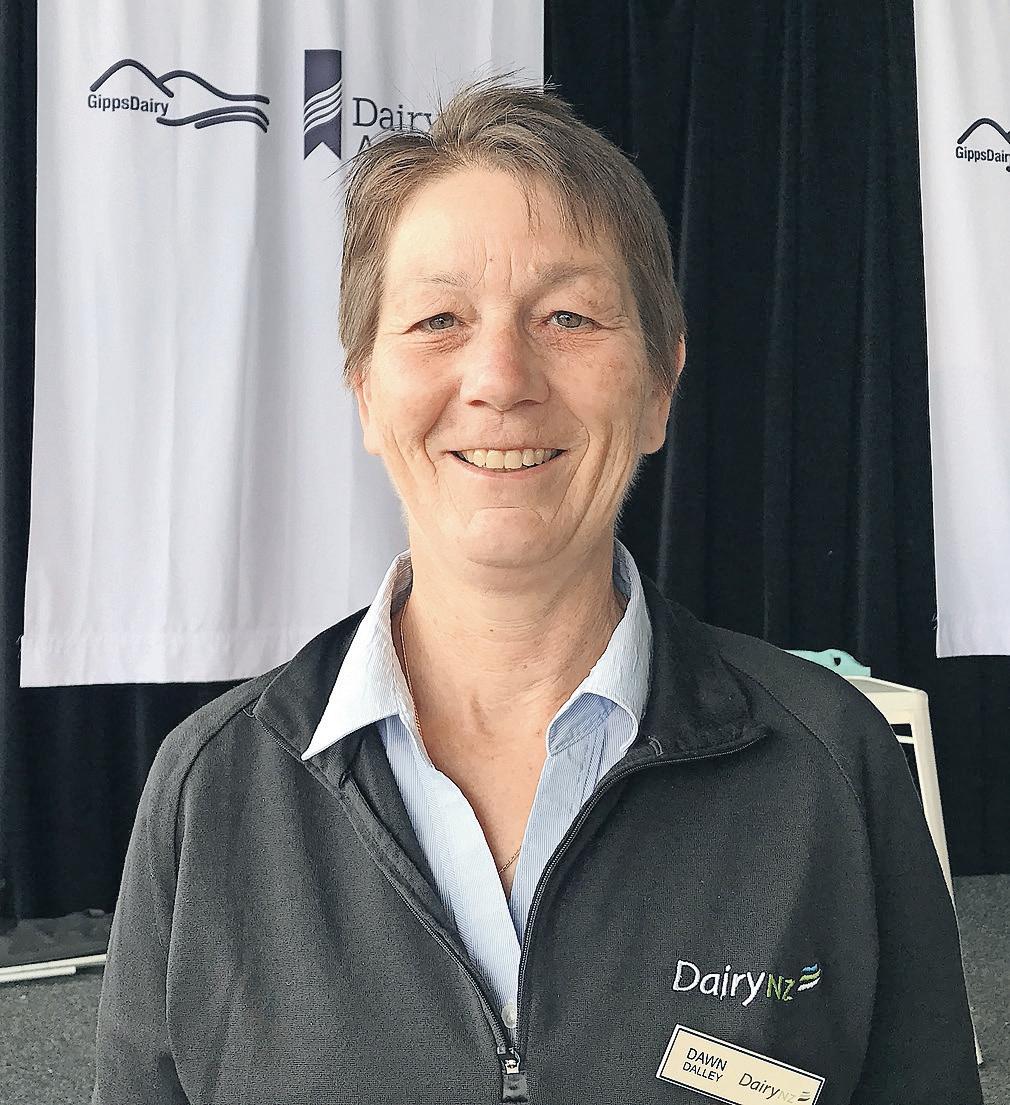
Constructing wetlands, fencing and revegetating waterways, are all initiatives designed to improve water quality, mitigate nitrogen loss, and can be implemented on the farm to demonstrate environmental capital.
Dawn Dalley, of DairyNZ, said while change was inevitable, and the future of regulation could appear heavy handed, there have been positive outcomes from research in New Zealand.
“In the last 15 years, this tension between farm profit, environmental footprint, animal welfare and customer expectations, has driven research in New Zealand,” Dawn said.
The Resource Management Act, government commitments to the Paris Agreement, milk company supply conditions and bank lending conditions were among the stakeholders to support improved environmental standards on farms.
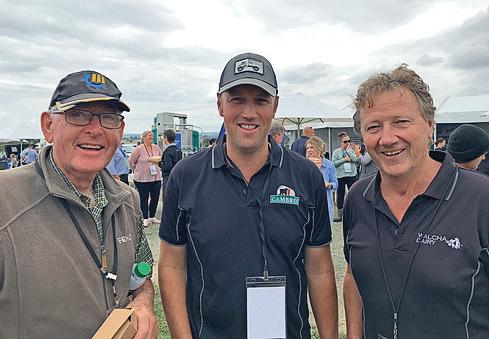
Effluent collection and management on-farm had improved.
Buffer areas — called Critical Source Areas — near water on farms were constructed with minimum setbacks and livestock exclusion areas, fulfilling the requirement for improved water quality.
Troughs provided in each paddock also kept cows drinking quality water and out of waterways.
With growing climate variability, farmers also needed contingency plans for dealing with the outcomes of adverse weather events.
One of the highest risk factors affected by adverse weather events, was effluent ponds filling and/or spilling during heavy rainfall.
Dawn said Australian farmers would be facing similar pressures to provide evidence they were protecting water quality, reducing nitrogen used and leaching, and housing their cows in comfort.
 Hosts for Dairy Muster at Trafalgar East were farm owners, Graeme and Louise Paul, with their children, Bayley, Stephanie and Darcy.
Wayne Weller, Longwarry, Evan Campbell, Yannathan, and Peter Notman, Poowong North were among the 230 people at the Muster.
Harry Hopkins, Willow Grove, with Craig McWhinney and Kellie Orgill, Shady Creek. For more pictures, go to: www.dairynewsaustralia. com.au
Hosts for Dairy Muster at Trafalgar East were farm owners, Graeme and Louise Paul, with their children, Bayley, Stephanie and Darcy.
Wayne Weller, Longwarry, Evan Campbell, Yannathan, and Peter Notman, Poowong North were among the 230 people at the Muster.
Harry Hopkins, Willow Grove, with Craig McWhinney and Kellie Orgill, Shady Creek. For more pictures, go to: www.dairynewsaustralia. com.au







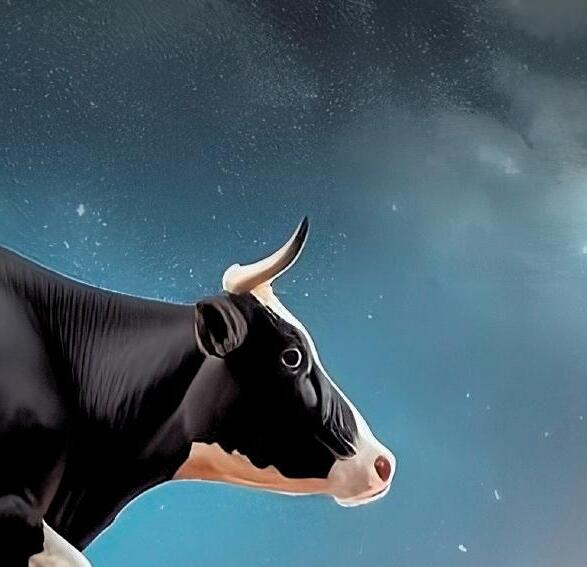










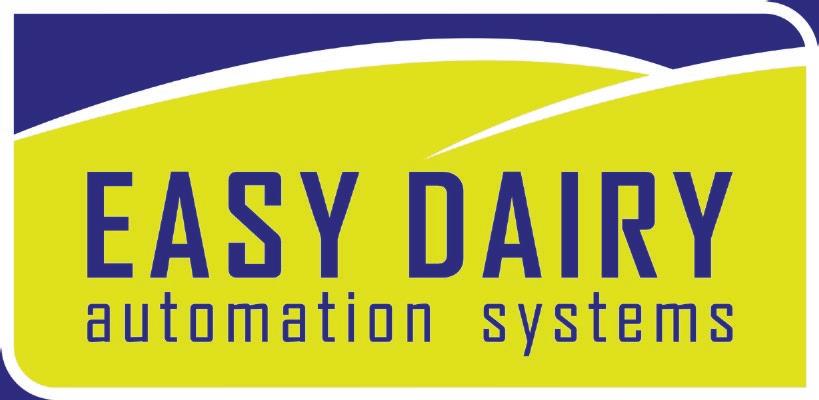

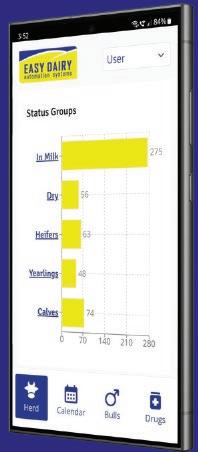

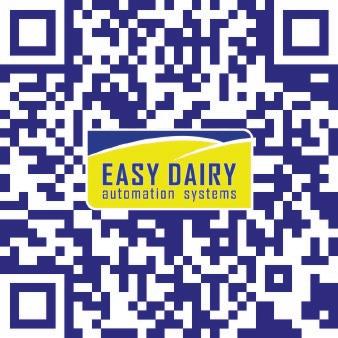
THERE WERE four breakout sessions available for dairy farmers to attend throughout Dairy Muster in Gippsland on March 14.
One breakout session, led by Jacob Cecil, an agronomist in West Gippsland, looked at productive pastures.
Bryce Templeton entered the dairy industry with a 22ha Trafalgar farm. He has since grown his landholdings to 83ha, and milks 140 cows.
Bryce’s farm is located on the productive river flats, which are regularly inundated with floodwater. This means he needs to select cultivars and manage his calving pattern to optimise grass cover.
Ben Damschke achieves pasture utilisation as high as 10 tonnes/ha, using a mostly perennial rye-grass base, supplemented with some hybrid cultivars. Ben uses a high stocking rate, with 420 cows on a 110ha milking platform, and an equal support area for silage, young livestock and dry cows.
Ben said he sticks to a single calving, which matches his pasture growth. He manages cow health by drying off cows during the wettest time of the year.
A panel session discussing the pathways and progressions available to youth and farmers in the dairy industry attracted a wide range of ages. Mother and daughter, Louise and Stephanie Paul, were speakers alongside Tom Glen and Hamish Bill.
Louise Paul, from Hill End, is from a multi-generation farming family.
Louise has a Diploma of Agriculture and is passionate about making time for training for herself, her family and her staff. She identified courses offered through TAFE, GippsDairy and Dairy Australia.
Stephanie Paul is a member of Gippsland’s Young Dairy Network and participated in the 2023 Don Campbell Memorial Tour to Tasmania.
Stephanie recognised she needed to leave the farm to gain experience of other workplaces — her parents encouraged that in all their children. She completed a Bachelor of Commerce and a Diploma of Agricultural Science and works in the agribusiness banking sector.
Stephanie’s goal is to find her own farming niche in the future, and she hopes to return to the family farm.
Hamish Bill, originally from New Zealand, and his partner, started their dairy careers in northern Victoria as farm managers, then moved to similar roles in Gippsland. They moved into sharefarming roles in 2016.
Hamish has built his equity in farming with a 400-cow split-calving herd, at Bona Vista.
Tom Glen completed his plumbing apprenticeship while working weekends on a dairy farm. He progressed to managing, then more recently started sharefarming on a dairy farm at Poowong North.
Tom is a member of Gippsland’s Young Dairy Network and was a participant on the 2023 Don Campbell Memorial Tour to Tasmania.
Discussing the future and how to step back from dairy were Graeme Paul, of Hill End, Colin Wright of Phillipsons Accounting and Financial Planning, and Andrew Balfour, from Willow Grove. Colin is a consultant to many farm businesses in Gippsland.
Colin brings his own experience growing up on a farm to his four decades of experience working with farmers to manage and grow
their businesses. He believes it is never too early to begin discussing succession, including children in business meetings, and encourages his clients to have off-farm investments.
“When you include children in business discussions about the farm, they understand what cash flow means, and why sometimes they can’t have or do the same things as their friends — who are not on farms,” Colin said.
Graeme Paul, of Hill End, came from a dairy farming family, and began farming independently with his wife, Louise, in 2002. Since then, they have grown their farm business, purchasing a second farm at Trafalgar in 2016.
In 2022, Graeme and Louise brought in sharefarmers to the Trafalgar farm, to enable them to slow down their own lives. Last year, Graeme and Louise invested in the Hill End farm to make changes for their future.
“It’s now a one-person milking shed,” Graeme said.
Graeme and Louise have also encouraged their three children to study for other careers, or take up apprenticeships. This plan was irrespective of their interest in the family farm, where they also have roles.
“It’s important for your kids to work for other people,” Graeme said.
“They learn respect in ways they won’t learn it at home.”
He and Louise have also included their children in discussions about succession.
Andrew Balfour, a dairy farmer at Willow Grove, with his wife, Carolyn, have progressed from sharefarming to leasing, then to farm ownership. They milk 850 cows.
Seventeen years ago, Andrew and Carolyn entered an equity partnership with another couple to buy a dairy farm in the Macalister Irrigation District.
Andrew and Carolyn have actively invested in off-farm equity. They own a holiday home at Lakes Entrance and Andrew said its usage has grown to regular long weekends every fortnight.
“It’s enabled me to step back from working so hard every day,” Andrew said.
“I now only do four milkings a week. The biggest change, though, is how everyone else has learned to not rely on me being in the workplace.”
Colin recommended the chief piece of advice he gives his clients.
“People need to be able to talk to each other,” he said.
“You can have conversations about the farm business at the farm. But when you get away from the farm, you need to be able to talk about other things.”
Talking about operating farm businesses in a changing environment were Janine Waller, executive officer of Australian Dairy Products Federation, Anna Thomson of the Dairy Feedbase 2023-28 program, dairy farmer Neil Joiner, of Newmerella, and Dawn Dalley, senior scientist in the Farm Systems research team at DairyNZ.
Neil spoke about his experience growing mixed species in a high rainfall farming district near Orbost. He used grazing to manage pasture density and growth.
One of his first forays into diversifying pasture was adding plantain into his seed mix.
“It was cheap per kilogram per hectare,” Neil said. “With seeding and through manure, it spread naturally across the farm.”
The next diversification was chicory, about 15 years ago.
“It was resilient in dry seasons and held on through pasture renovations,” Neil said.
His experience was reinforced by Anna, who has been researching mixed pasture species
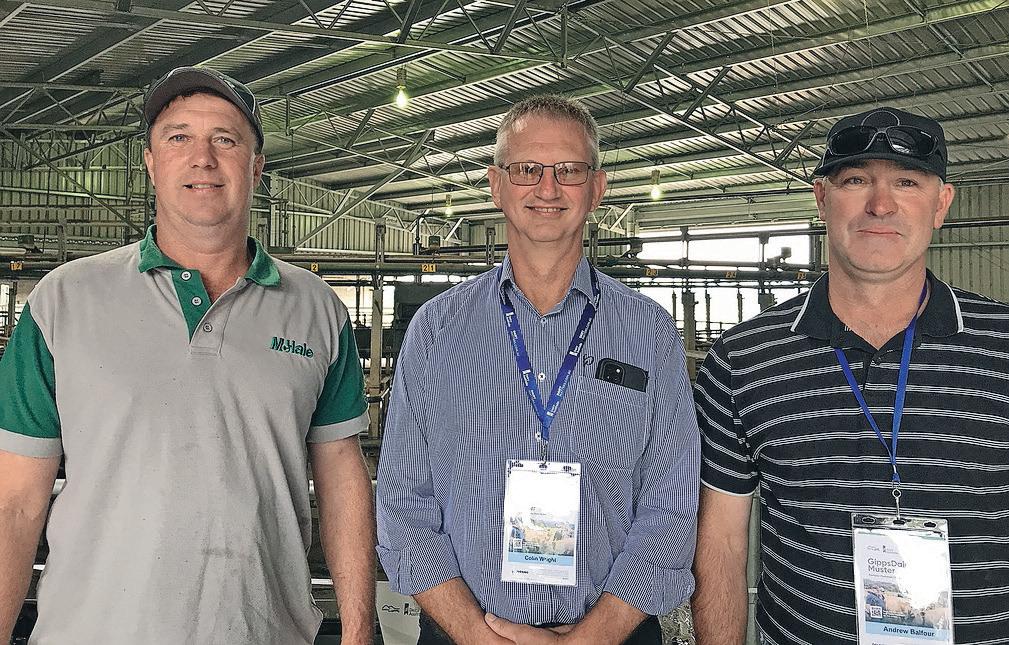
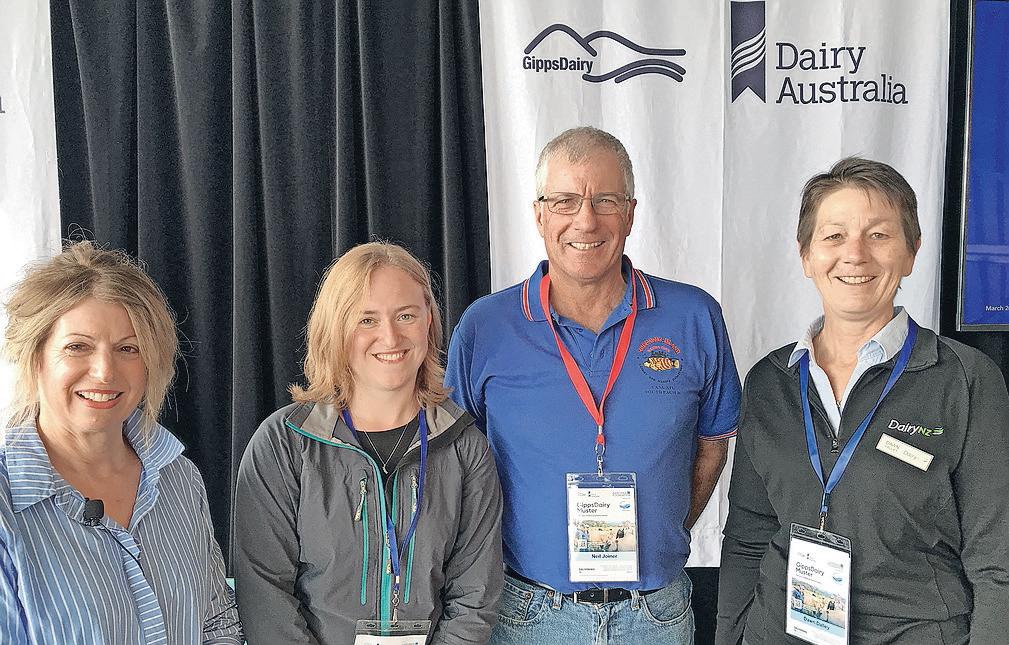

within systems to reduce emissions.
She is leading a project measuring the differences in production from the cow grazing 12 forage species compared to rye-grass.
The project began in 2023, sown in autumn, and yield will be measured over five years.
Anna also mentioned a project at Ellinbank that would be testing methane-reducing dietary additives in the cows’ diet.
Janine said emissions reduction was a priority of government policy, with a short time frame to achieve 43 per cent reduction by 2030.
She said the Mandatory National Greenhouse and Energy Reporting Act 2007, when implemented, would require accounting
for everything along the production supply chain.
“This could be as early as 2025,” Janine said.
Sustainability was heavily influencing the trading environment for dairy products, with emissions reduction, animal welfare and human rights among the key indicators.
Janine said human rights would be assessed against safe workplaces.
“Consumers will want to know Australian dairy as a trusted partner and product of choice,” she said.
However, the market signals for what farmers should be doing at the farm level were still unclear for many.
Graeme Paul, Colin Wright and Andrew Balfour. Janine Waller, Anna Thomson, Neil Joiner and Dawn Dalley.
A LUNCHTIME highlight of this year’s Dairy Muster in Gippsland was a rundown on the points of a cow that make up Jersey classification, delivered by Reece Attenborough, of Poowong.
The Jersey cow on show was led by Simon Reid of Jackiah Jerseys.
Reece is a senior classifier with Jersey Australia, and has been a cow classifier with Jersey Australia for 12 years.
Jersey Australia was a sponsor of the Dairy Muster, and was asked to
provide a lunchtime demonstration on classification and how it is done.
“I went through the 24 different type traits that we calculate as classifiers, on the one to nine scale that we assess within the classification system,” Reece said.
“I gave a run down on each type trait, where on the cow those traits are assessed, how we score them, and what is considered ideal for each trait.
“Classification is based around a true-type animal and its overall functionality. Our 24 linear traits assessed are the key components that make our four Trait Composite

Groups that, in turn, make up a cow’s final class score.
“Those four traits groups and their weightings are: Dairy Strength 40 per cent, Mammary 35 per cent, Rump 15 per cent and Feet and Legs 10 per cent.”
Reece said the cow with the true type will have great dairy strength showing that combination of overall width and clean flat dairy bone, walk on a great set of feet and legs, have a good rump with length, width and slope, and show a well attached udder with good teat placement.
“A cow who displays an overall
correctness in these traits versus a cow who is less than ideal is more likely to have a distinct advantage — she will be a more healthy cow, is able to convert high feed intake into milk production more effectively, and she has added benefits of being more fertile and having that greater longevity of being able to do so further on into her life.”
Peter Williams followed up with how to look at bull ABVs for corrective mating.
“Peter was explaining how to use the data information shown on a Bull proof for corrective mating,” Reece said.




 Caleb Berry, Glen Alvie, with Chris Axford and Hayden Bull, Axford Family Farm, Korumburra South, at the Dairy Muster on March 14.
Colin Wright, Phillipsons, with Dairy Muster MC, Trish Hammond, and keynote speaker, Dawn Dalley, Dairy NZ.
Louise and Simon Finger, Yannathan Heights, and Georgia Clayton, Drouin. For more pictures, go to: www.dairynewsaustralia.com.au
Caleb Berry, Glen Alvie, with Chris Axford and Hayden Bull, Axford Family Farm, Korumburra South, at the Dairy Muster on March 14.
Colin Wright, Phillipsons, with Dairy Muster MC, Trish Hammond, and keynote speaker, Dawn Dalley, Dairy NZ.
Louise and Simon Finger, Yannathan Heights, and Georgia Clayton, Drouin. For more pictures, go to: www.dairynewsaustralia.com.au